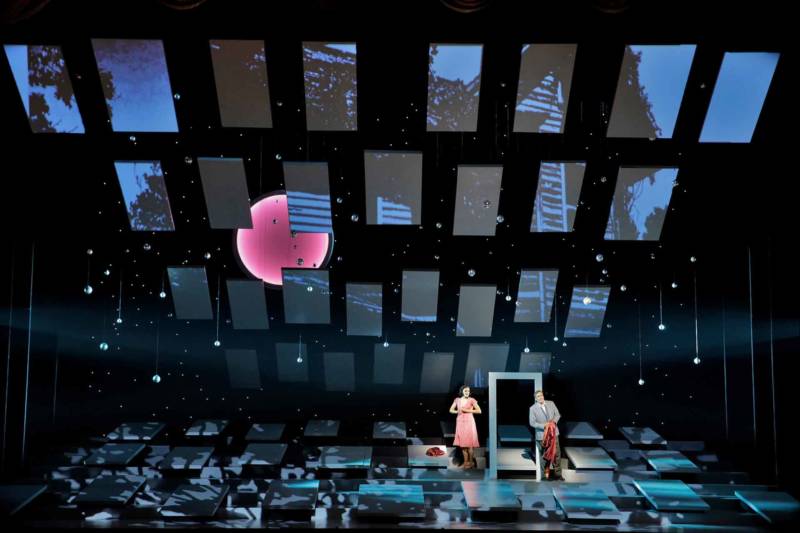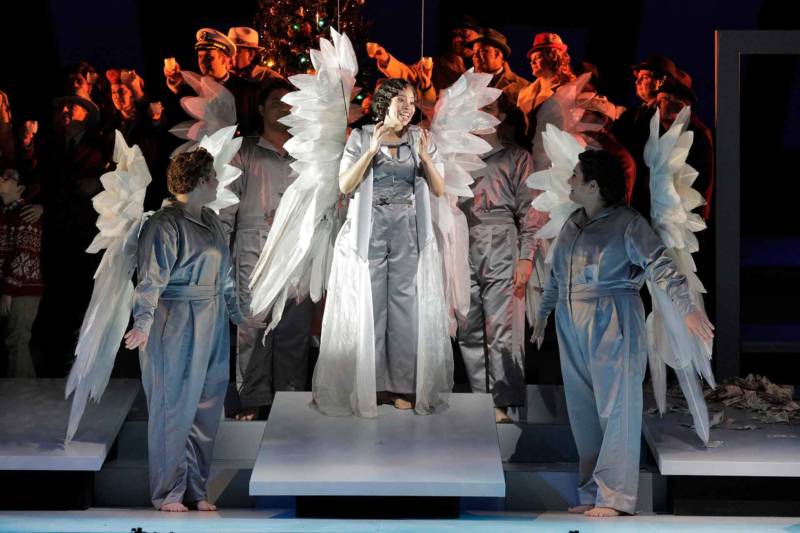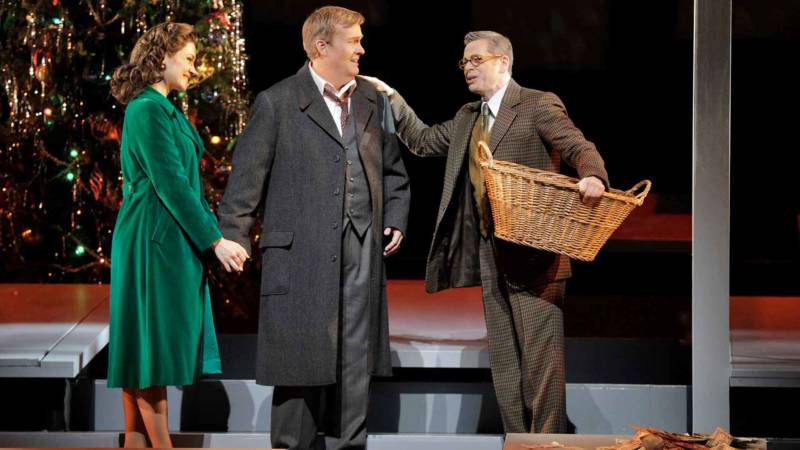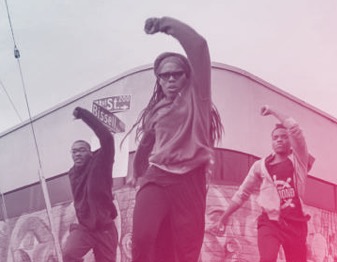It’s A Wonderful Life at SF Opera is the sort of thing you recommend to your more experimental-minded friends. The ones who are willing to try any strange idea, just to see how it turns out. The ones who order a Mission-style burrito in Massachusetts, just to see what Massachusetts does with the concept of a burrito. The ones who watch Gus Van Sant’s shot-for-shot remake of Psycho, just to see what Gus Van Sant does with the concept of Psycho.
It’s a Wonderful Life at SF Opera is for these people, who have two more chances to see what the opera does with a concept as beloved, well-worn, and seared into American consciousness as It’s a Wonderful Life. I’ll give you a hint: it involves George Bailey standing over choppy waters, contemplating suicide, despondently singing, “Even the lasso around the moon has become a noose.”

In other words, this retelling of the classic Christmas story is heavy on drama and light on humor. Part of this fact is just, well, opera. You can’t evoke the fun spontaneity of dozens of teenagers jumping into a swimming pool at a dance when each of them is laboriously narrating their inner thoughts. The exclamation “Hot dog!” is much less joyful when sung in rich baritone. Even the battles with Mr. Potter had some wit to them in the film; in the opera, a chorus of angels sings blithely: “Once again, dreams of travel denied! / Together they fight Potter side by side!”
All of this is far more fascinating than disappointing, and forces the viewer inside the heads of Jake Heggie and Gene Scheer, who had the unenviable task of adapting a widely watched classic film for the opera stage. Why did they eliminate the character of Violet? Why did they decide, in George’s reverie, that Mary simply “went away to college” and never came back, instead of becoming the town librarian? Why did they incorporate a recurring dance, the Me-kee Me-kee, in place of “Buffalo Gals”?

The cast does well with the material; Golda Schultz as the angel Clara, Andriana Chuchman as Mary and William Burden as George Bailey fill the lead roles strongly—and, where there’s room, bring out the annual warm feelings the movie evokes. The scene with the most emotional resonance, oddly, is the run on the Savings and Loan after the Stock Market Crash, when George negotiates desperately with customers who want their money. (Coincidentally, it’s the scene where the libretto hews closest to the film’s dialogue.)



